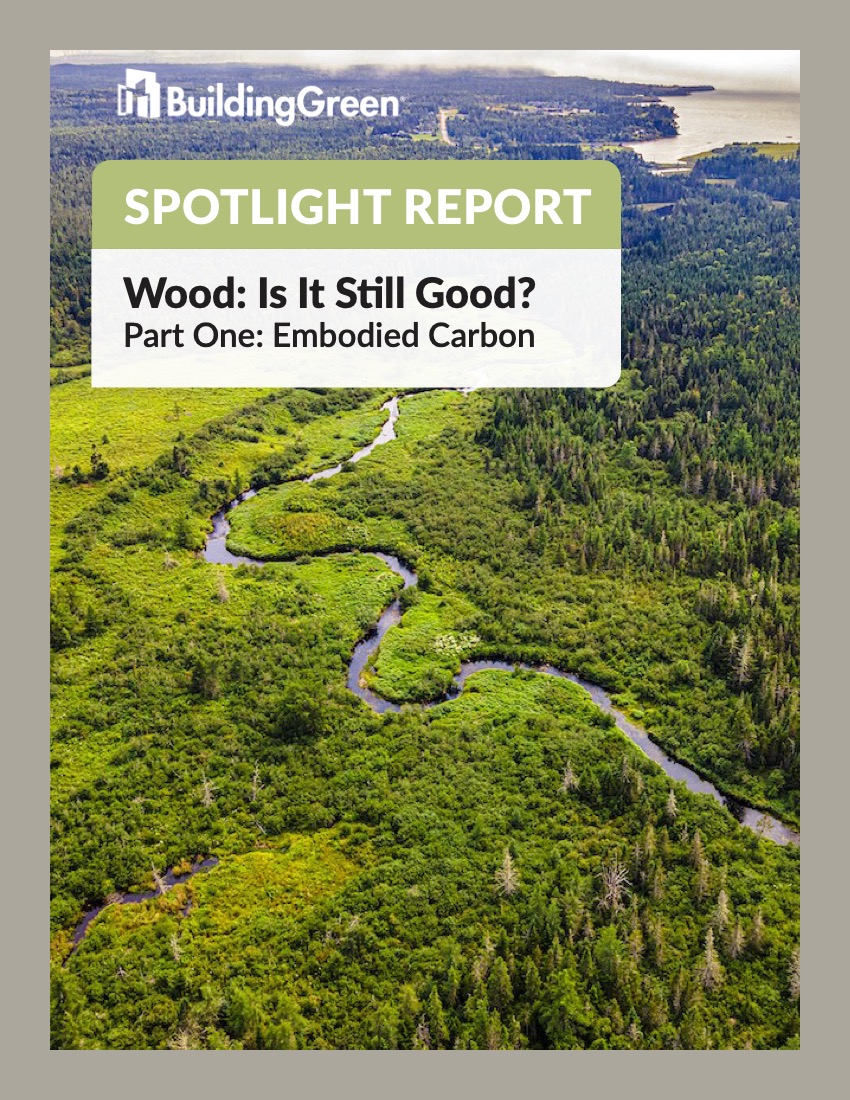Spotlight Report
Wood: Is It Still Good? Part One: Embodied Carbon
Is wood carbon neutral? Can mass timber buildings be net-negative emitters?
You have probably heard both of those claims repeated by manufacturers, colleagues, and the media—but the World Resources Institute isn’t so sure. A WRI report released in July 2023 maintains that wood use is not carbon neutral “even if forests are managed sustainably” and adds, “In most scenarios, harvesting additional wood, even for construction, will likely increase atmospheric carbon for decades.”
Wow! That goes against everything we’ve been assuming for years.
This BuildingGreen spotlight report is Part One in a two-part series exploring the longstanding assumption that wood products are inherently carbon neutral and that they can result in net-negative emissions when used to replace concrete or steel.
The course examines several claims and counterclaims about “sustainable” forestry and wood products, considering the potential climate impacts of massively increasing demand for wood.
The question of scaling mass timber in particular is important to consider, given that current mass timber construction is a minuscule fraction of new construction globally (in the U.S., it’s nowhere even near 1% annually). So increasing that by even a percentage point or two could have significant ecological and climate implications.
This course takes a critical look at:
-
Assumptions about wood products’ carbon neutrality, storage, and emissions
-
The benefits of substituting wood for concrete or steel
In addition, it highlights:
-
The emergence of the term “climate smart” to describe forestry practices and wood products
-
Preliminary guidance from experts in multiple disciplines about how to move forward amid uncertainty
This is your chance to:
- Compare and contrast biogenic carbon and fossil carbon, exploring ways in which they’re the same (when released to the atmosphere) and different (when examining the full environmental impacts of renewable and non-renewable materials).
- Understand the origin and the correct application of the “carbon-neutrality assumption” for wood products that’s permitted by life-cycle-assessment standards.
- Discern the significance of substitution benefits—the purported carbon advantages of replacing concrete or steel with wood—that may be evident at the building scale but not realized at a macroeconomic scale.
- Take four positive steps forward as the industry explores wood’s climate profile—by rejecting carbon-neutrality assumptions; seeking circularity; taking a more holistic approach to forestry products that includes resilience, socioeconomic justice, cultural factors, and biodiversity; and embracing greater nuance and complexity during material selection and procurement.



